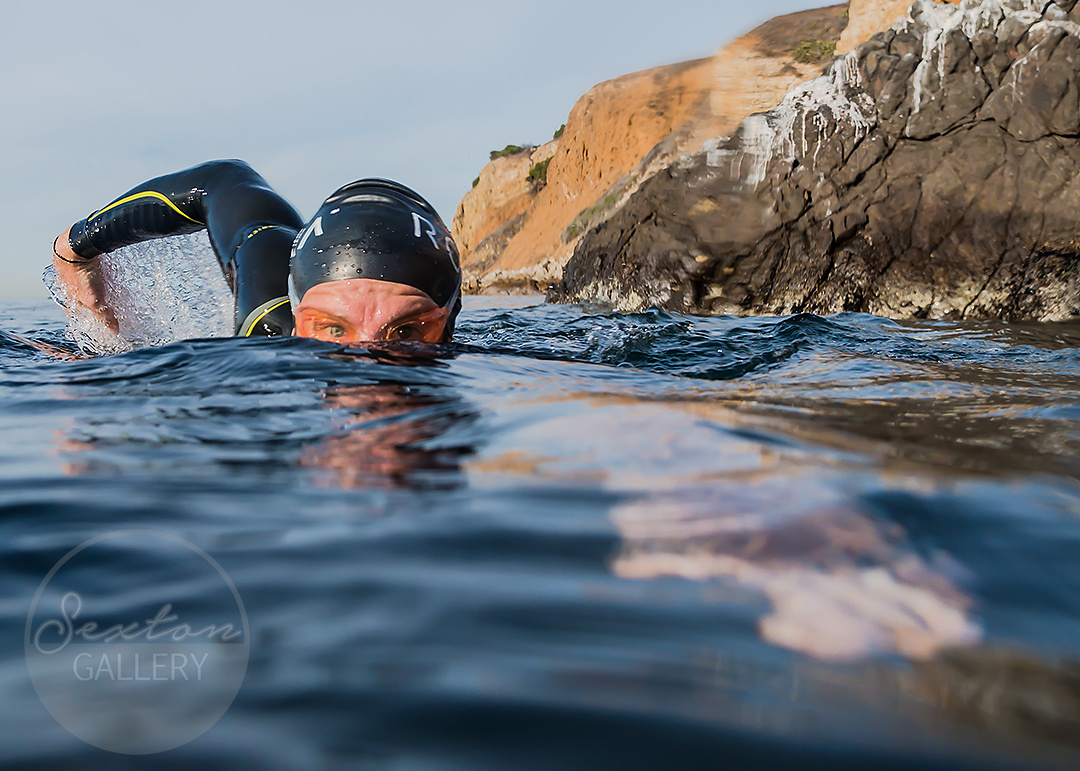Open Water Sighting: What You Need To Know

There is something innately positive and natural about swimming in the open water. The limitless sensation of swimming without the confines of walls and lane lines is a big draw for many people.
Swimming in the open water requires patience, determination, confidence and a bit of humor. Unlike the pool, open water conditions can be quite variable, with elements such as wind, surface chop, big waves and swell to be considered. One, or a combination of these factors, can create intimidating swimming conditions unless you're prepared before you get your feet wet.
The Biggest Return on Your Investment
Sighting is the most important skill to increase your open water swimming IQ. It may seem obvious that a swimmer must look forward or "sight" to maintain a straight course, but it's likely the most common and costly problem seen in triathletes and open water swimmers alike.
The best swimmers integrate sighting into the mechanics of their stroke cycle. The natural tempo and fluidity of your stroke should not be interrupted or compromised while you sight. Many swimmers halt their stroke completely to lift their head to look around, and restart their stroke each time. This improper technique causes a huge break in momentum and a correlating drop in body position.
Instead, imagine extending your head forward, similar to a turtle, to maintain a low profile in the water. The higher you lift your head out of the water, the lower your hips and legs will sink--causing a lot of drag and loss of speed. Depending on water conditions, your goggles (and possibly nose) should clear the water when sighting, just enough to get a clear picture of what's ahead of you.
When Is the Right Time?
Tempo is everything in open water swimming. Maintaining a consistent, rhythmic stroke rate allows the swimmer to overcome the difficulty of the dynamic, moving water without losing speed or momentum.
Integrating sighting mechanics into your stroke cycle is imperative to managing the integrity of your stroke in open water. To monitor this, repeat "inhale, exhale, inhale, sight" in your head as you take each stroke; sighting is synonymous with the exhale. As you extend the head forward to sight you should be exhaling, even if your mouth clears the water. Your breathing pattern is your tempo in swimming, and consistent breathing will translate directly to aerobic efficiency.
There is no time for hesitation when sighting. Take your inhale, and just as you would normally return your face into the water to exhale, extend your head forward to sight while exhaling. If you don't get a clear view during this window of time, do not hesitate. Instead, continue with your stroke cycle--rolling into the next inhale and sight again on the next stroke. The number of times you should sight is subjective and based on how difficult it is to see in front of you due to the conditions at hand. I recommend sighting more often than not--every two to four stroke cycles-- guaranteeing your most direct course possible.
Controlling the Variables on Race Day
Being prepared for an open water swim will put you mentally at ease, and you'll be confident that you will navigate the course masterfully and swim efficiently. From the shore, take a look at the buoys of the swim course to get an idea of what you will see while out in the water. Find a landmark on land, a fixed object that stands out such as a telephone tower. This marker will help you reference where you are relative to the buoy at all times, especially in cases when you're unable to see the buoy.
If the race allows, do a warm-up swim out to the first buoy so that you have a sense of its distance from the starting point. This will also help you gauge the effort you will need to give at the race start. Once you're at the first buoy, position yourself toward the second buoy so that you know what to expect at this point of the swim. Again, try to find a fixed reference point on land that you can easily see while swimming.
It's unrealistic to think you'll be able to train in the open water all the time, but this doesn't discount the importance of sighting practice. It's easy to incorporate sighting--even while pool training. Start by sighting once or twice each length of your main set, building up to the point that you're able to comfortably maintain sighting mechanics for the bulk of your workouts. Next, swim in your local body of water and have fun implementing these newly developed skills and confidence.
Long may you swim,
Bryan Mineo



